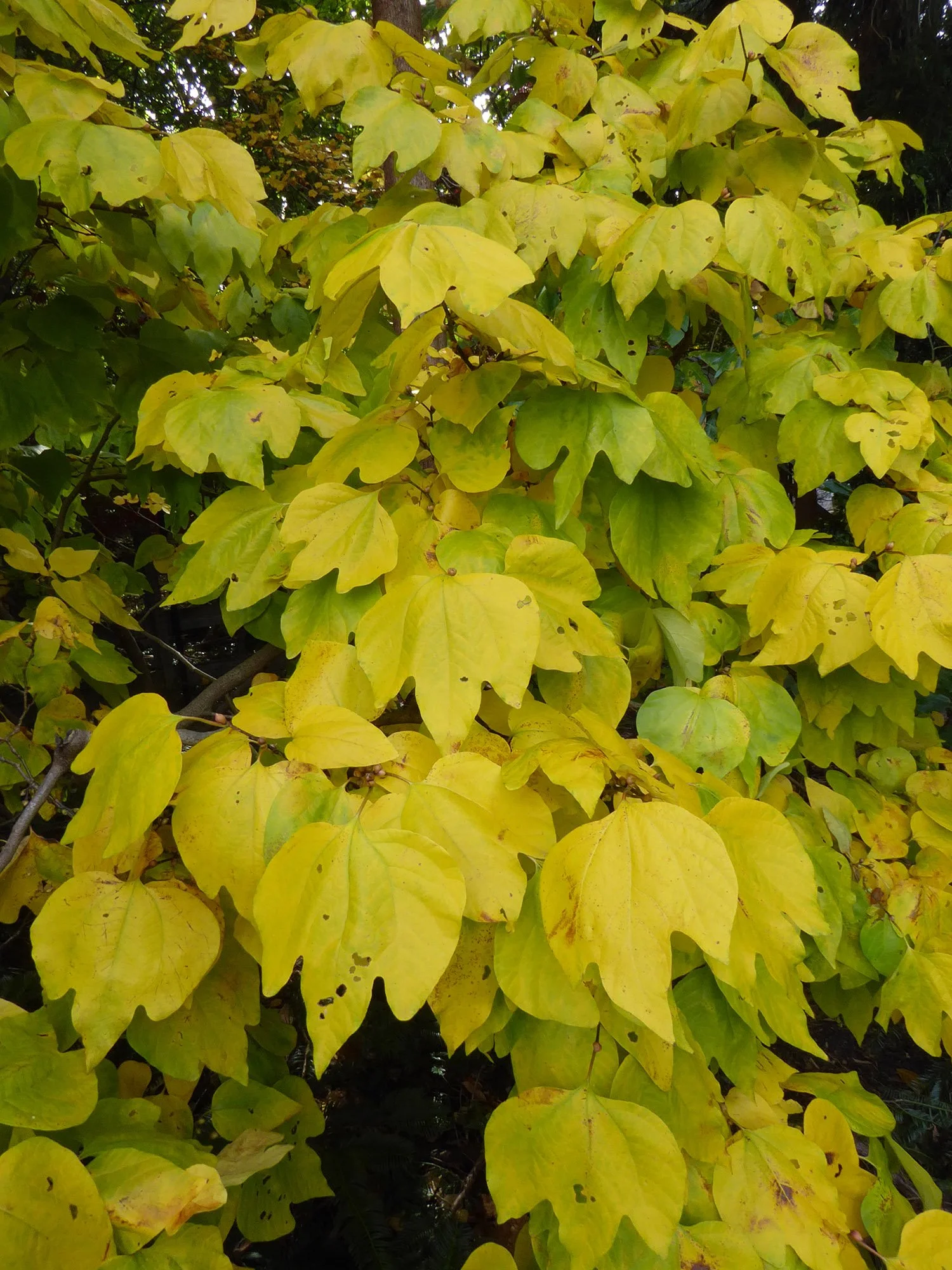Spice Up the Garden: The Spice Bushes
In the Garden with Andrew
Lindera glauca var. salicifolia. Photo: Andrew Bunting
Spicebushes are part of the genus Lindera, which includes as many as 100 evergreen and deciduous species. All of them can be cultivated locally, and are exceptionally deer-resistant.
Throughout the native woods of the eastern United States, particularly in Pennsylvania, New Jersey, and Delaware, the understory is dominated by the native spicebush, Lindera benzoin, a relative of the sassafras, Sassafras albidum. It is a multi-stemmed shrub that reaches between 6 and 12 feet tall, with an equally wide spread. It is called the spicebush because the stems and leaves have a pungent fragrance. It is native from Maine to Florida, and as far west as Kansas and Texas. In early spring, before its leaves emerge, the naked stems become covered in bright yellow flowers. In the fall, bright, shiny red fruits appear in profusion: they are an important food source for a myriad of birds. Later, the foliage turns a bright, golden-yellow color. Perhaps the most important attribute of this spicebush and similar species is that they are one of the few plants that can lay claim to being 100-percent deer resistant.
The Asian, Lindera glauca var. salicifolia has become one of my favorite shrubs. It can reach up to 15 feet tall, but its height can be easily controlled by a severe pruning in late winter. Like the native spicebush, it blooms in early spring and has an abundance of yellow flowers. The narrowly elliptic leaves have a great texture in the summer, and in the fall they turn an amazing bright pumpkin-orange color which looks as if it has been sprayed with fluorescent orange paint! The leaves then fade to a pinkish taupe and persist throughout the winter, providing significant winter interest. Toward the end of the winter, before flowering, the leaves fall off. The fruits are a shiny black berry that is particularly attractive to the gray catbird. While this species produces an abundance of fruit, relatively little seeding occurs in the garden. Occasionally, a seedling will serendipitously pop up in the garden, and that is a welcome occurrence.
Lindera glauca var. salicifolia combines well with other plants that have great fall color, such as the pepperbush, Clethra alnifolia, with golden leaves, or Virginia sweetspire, Itea virgincia ‘Henry’s Garnet’, with burgundy-purple leaves, or the many cultivars of the oakleaf hydrangea, (including Hydrangea quercifolia ‘Snow Queen’, ‘Snowflake’, ‘Ruby Slippers’ and ‘Amethyst’), with purplish-red leaves. The latest flowering salvias—including the cultivars of Salvia leucantha, with their tubular white and purple flowers—make for a stunning combination.
Lindera glauca var. salicifolia. Photo: Andrew Bunting
Lindera obtusiloba. Photo by Andrew Bunting.
Another Asian selection is the Japanese spicebush, Lindera obtusiloba, a multi-stemmed, broad-spreading shrub that reaches 10 feet tall. In the garden, it has a bold texture: its leaves may be lobed or unlobed, and are shaped like sassafras leaves. L. obtusiloba has a stunningly beautiful, bright golden-yellow fall color. It blooms in March, with an abundance of round ornamental clusters of bright yellow flowers, and so it fills a flowering niche in the garden—because it blooms after the last flowering Hamamelis, witch hazels, but before the earliest of the flowering cherries and magnolias. Its amazing fall color really stands out against a dark black-green backdrop of coniferous evergreens, such as Thuja plicata ‘Green Giant’, or the Japanese red-cedar, Cryptomeria japonica ‘Yoshino’, or the Oriental Spruce, Picea orientalis. It can also be planted in front of broadleaved evergreens—such as Daphniphyllum macropodum and the myriad of Osmanthus heterophyllus cultivars, including ‘Gulftide’ and ‘Sasaba’.
There are many other species—though they are often difficult to find—such as the tree-like Lindera erythrocarpa, which boasts a yellow fall color, and the Lindera reflexa, which I have in my backyard, and which offers a beautiful suffusion of orange and yellow in the fall.
Send your gardening questions to editor@swarthmorean.com. Put “Garden” in the subject line.
Andrew Bunting is vice president of public horticulture at the Pennsylvania Horticultural Society and vice president of the Swarthmore Horticultural Society.





